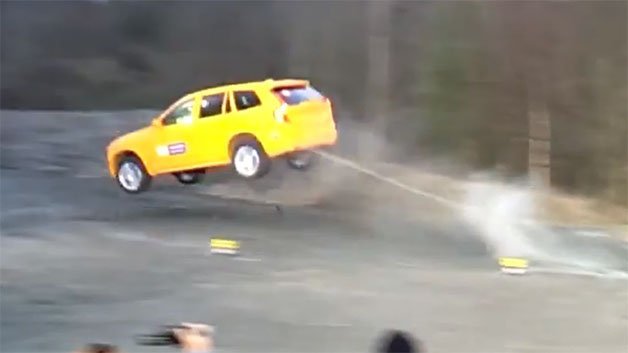Volvo's XC90 'Ditch Test' Makes for Radical Video

After detection, the system retracts the seat belts while a spine protection element between the seat and the seat frame helps cushion the blow for passengers, the airbags are activated in case of a forceful frontal impact and release pin is sprung that retracts the brake pedal.
Volvo showed a computer animated model of the safety feature at work in July; it showed off the system in real life this month at a facility in Sweden. According to Frank Markus, the technical director at Motor Trend (who posted the event on his Facebook feed), the test vehicle left the facility at 48 miles per hour before driving over the side of a constructed road, hitting an embankment and going airborne.
We only get an exterior view of the test so it's impossible to judge the explicit results of the system, but knowing Volvo, it's probably pretty good. The video above shows the test at normal speed (the action starts at 0:23), two of the videos below are slow motion takes, the final video is Volvo's animation.
Related News


